Formats
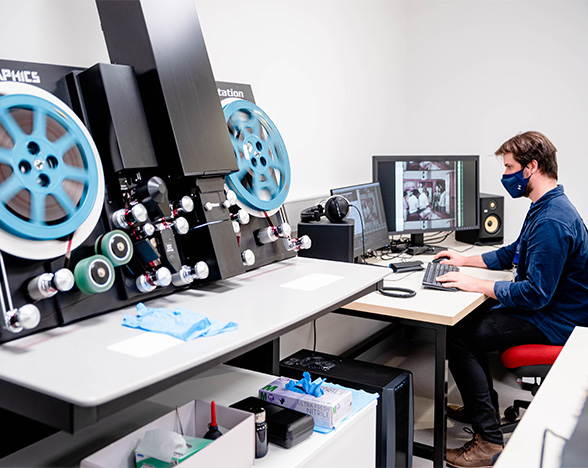
Digitisation services are available for the following five formats:
- Film
- Video
- Audio
- Paper based
- Transmissive photography
On this page
Film
The film equipment has the capacity to digitise 8mm, Super8, 16mm, and 35mm film. Clients are typically provided an access copy (watchable and downloadable format) and preservation copies of the films (images of single frames).
Prior to digitisation all film is prepared by staff with a basic inspection. A leader is attached to the head and tail ends of the film to provide the length necessary to be loaded onto the Lasergraphics ScanStation 6.5k, ensuring that all frames are captured. Films are tested for acetate compounds (a good indicator of how degraded a film may be) as it allows our staff to handle degraded the film safely. Acetate gives off a vinegar odour and can be damaging to persons if exposed over a prolonged period.
Dye fade is common with degrading film. Depending on the format and previous storage conditions, as the other dyes fade away, film can begin to appear too dark, light or one specific colour such as red or blue. DCWA will ensure film is objectively legible by carrying out elementary colour correction.
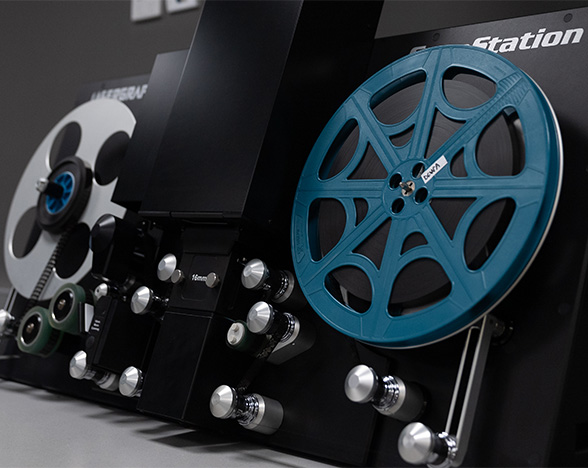
Lasergraphics ScanStation 6.5k
The ScanStation is specially designed for archival film scanning. It offers up to 6.5K resolution, scanning speeds of up to 60 fps, and handles multiple film gauges including 8mm, Super 8mm, 16mm, and 35mm.
The ScanStation reads optical soundtracks at any frame rate and outputs the sound with correct pitch and in sync with the picture. Other features include severely warped film handling, multiple concurrent file outputs, HDR for colour and B&W film, Automatic Failed Splice Recovery, and best-in-class image stabilisation.
Video
The video equipment has the capacity to digitise:
- VHS
- U-matic
- Hi8 / Video 8
- DV / MiniDV
- Betamax
- Betacam
- BetacamSP
- DigiBeta
Video digitisation is uniquely challenging as the original equipment used to play the format is used in the digitisation process. The equipment is linked into the QUADRIGA Video software to complete the digitisation process. DCWA continues to acquire video equipment to ensure the digitisation process runs smoothly. If you have or know of anyone looking to donate or sell video equipment please get in touch!
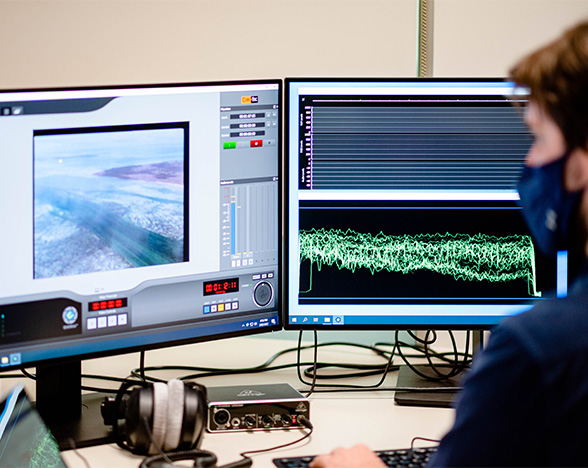
QUADRIGA Video
QUADRIGA Video is a migration workstation designed for the quality-controlled transfer of video tapes into archive files on a large scale. It supports simultaneous, parallel capturing from video playback machines and supports the conversion of VHS, S-VHS, Betamax, Betacam, VHS-C, U-matic, DV, and Mini DV.
Audio
The Audio Studio has the capacity to read all major analogue audio formats and to ingest these to archival standards in digital format, including:
- Reel-to-reel
- Vinyl
- Cassettes
- and multiple other tape formats
The Digitisation Centre’s Audio Digitisation Studio is located on level 2 of the State Library of Western Australia.
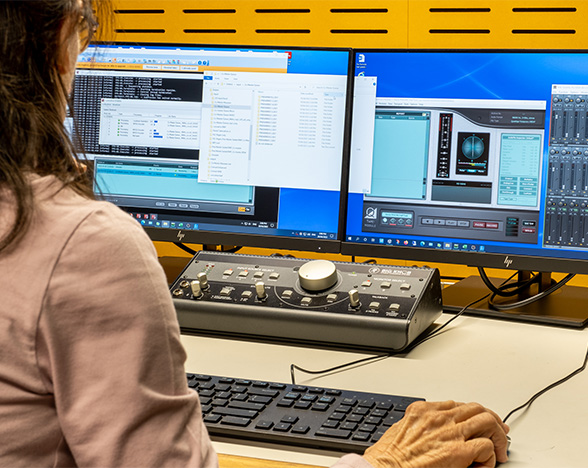
QUADRIGA Audio
QUADRIGA Audio is the solution for the digitisation of a variety of media types, transferring single carrier sound archives into digital mass storage systems, with a strong emphasis on audio quality and metadata accuracy. It allows capture from analogue compact-cassette recorders, analogue tape machines, Digital Audio Tapes, record players, and other machines.
Paper based
The paper-based equipment has the capacity to digitise all sizes of bound or unbound paper-based items up to A1. The centre has digitised:
- Works on paper
- Documents
- Newspapers
- Photographs
- Drawings
- Maps
- Plans
- Petitions
- Manuscripts
- and more!
Clients are typically provided an access copy (enhanced images) and preservation copies of the material (as captured images).
-
Digital Transitions Versa
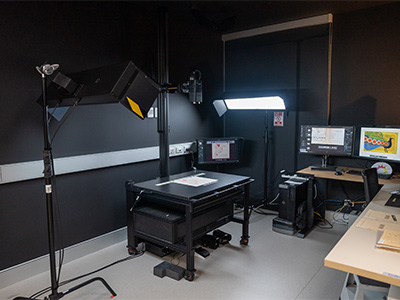 The DT Versa provides seamless flexibility of bound and loose materials. The equipment includes a camera, stand and column that integrate with Capture One Pro software for preservation-grade images.
The DT Versa provides seamless flexibility of bound and loose materials. The equipment includes a camera, stand and column that integrate with Capture One Pro software for preservation-grade images.
Key features include:
- Delivers preservation-grade TIFFs in RGB mode, JPEGs in sRGB mode, and PDFs
- Equipped with SmartPPI integration to produce FADGI 4-Star Image Quality
- Phase One iXG 150-megaxiel camera is used in conjunction with the DT Versa platform in the Centre
- 180° glass platen for digitization of up to 4” bindings and page spreads of 25” x 35”
- Use of book wedge allows < 100° book opening
-
Kodak Alaris i4250
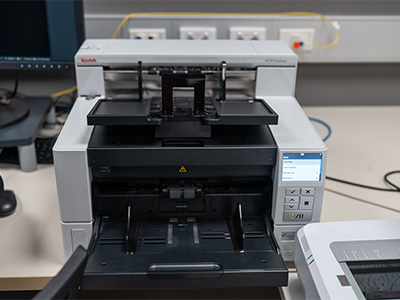 A powerful batch document scanner for high-volume capture, the Kodak Alaris is capable of handling an average of up to 30,000 pages per day and can scan a mixture of documents of different sizes and thicknesses, including fragile documents. It has sensitive built-in technology to avoid document damage and excellent OCR read rates for more precise data extraction with no loss of scanning speed.
A powerful batch document scanner for high-volume capture, the Kodak Alaris is capable of handling an average of up to 30,000 pages per day and can scan a mixture of documents of different sizes and thicknesses, including fragile documents. It has sensitive built-in technology to avoid document damage and excellent OCR read rates for more precise data extraction with no loss of scanning speed.
Transmissive photography
Transmissive photography provides the opportunity to re-examine photographic collections from the past century. Transmissive formats include:
- Slides
- Negatives
- Glass plates
Clients are typically provided an access copy (enhanced images) and preservation copies of the material (as captured images).
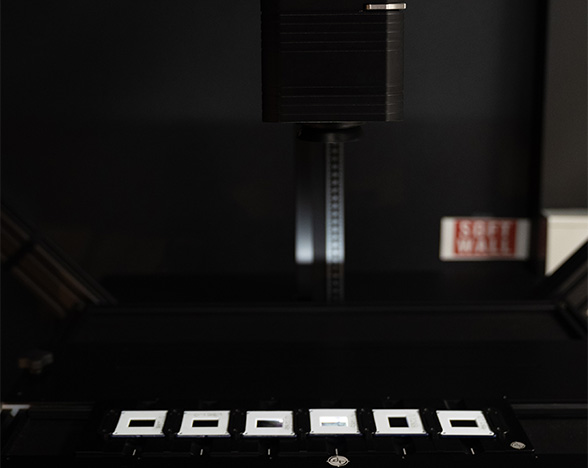
Digital Transitions Atom
The DT Atom is a smaller platform that functions similarly to the DT Versa and is used by the DCWA to digitise transmissive items such as slides and negatives to the required archival preservation standards.
Key features include:
- Transmissive items including slides, negatives and glass plates.
- Delivers preservation-grade TIFFs in RGB mode and JPEGs in sRGB mode
- Capture up to 6000 PPI
- Equipped with SmartPPI integration to produce FADGI 4-Star Image Quality
- Phase One iXG 100-megaxiel camera is used in conjunction with the DT Atom platform in the Centre
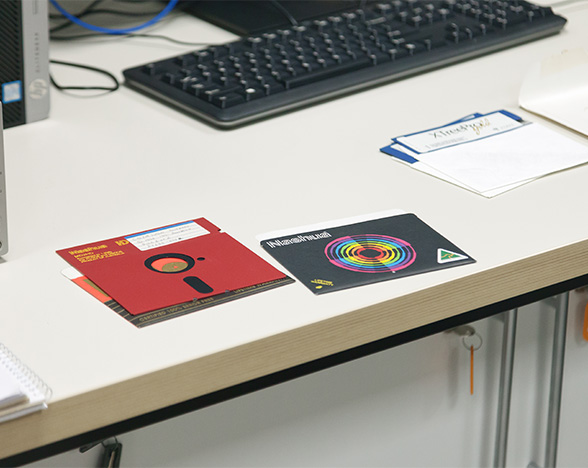
New format – Optical Media
The Centre has recently added a workstation dedicated to imaging disks in various formats, including floppy disks, zip disks, CDs and DVDs.
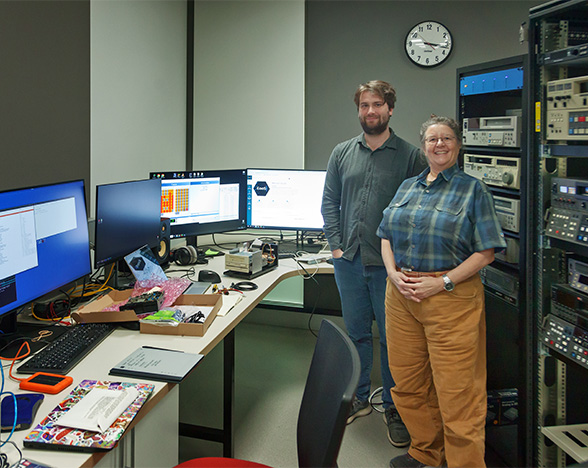
The Centre is a partner on 'Australian Emulation Network: Accessing Born Digital Cultural Collections' LIEF project funded by the Australian Research Council, and is capable of running emulation on the Australian EaaSI (Emulation-as-a-Service Infrastructure) browser-based platform.
Get in touch
Locations
Main digitisation laboratory
Level 2, Barry J Marshall Library (Room 2.14, Building 446),
University of Western Australia
Crawley campus.
Dispatch room
Ground level Barry J Marshall Library for receiving and storing collections.
DCWA sound studio
Level 2 of the State Library of Western Australia in the Perth Cultural Centre, Northbridge
